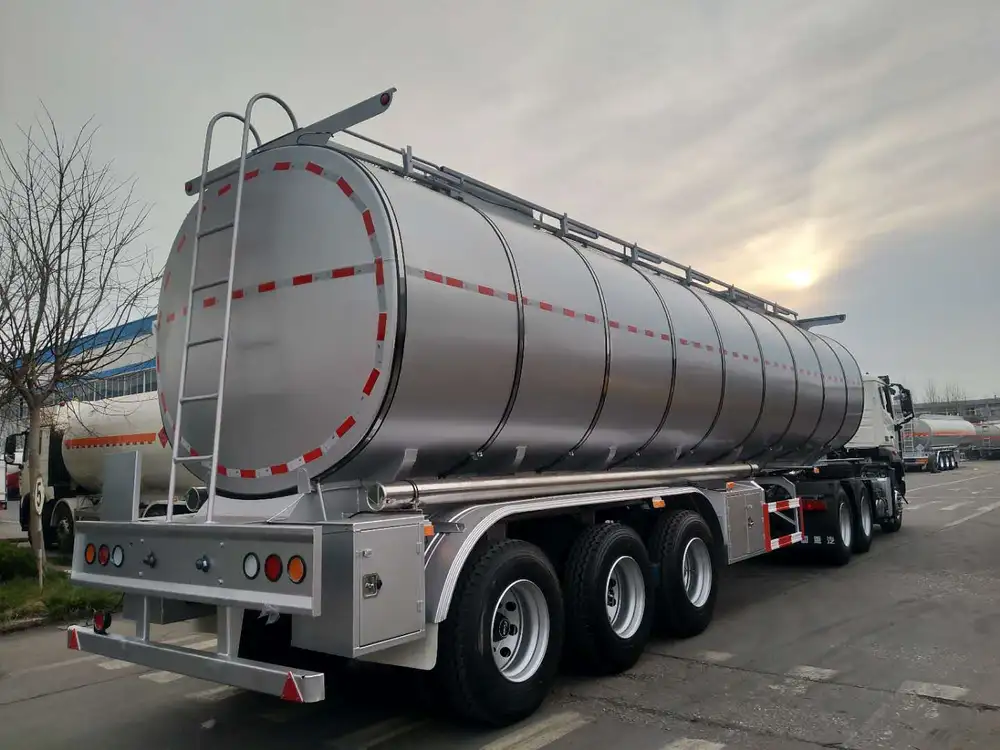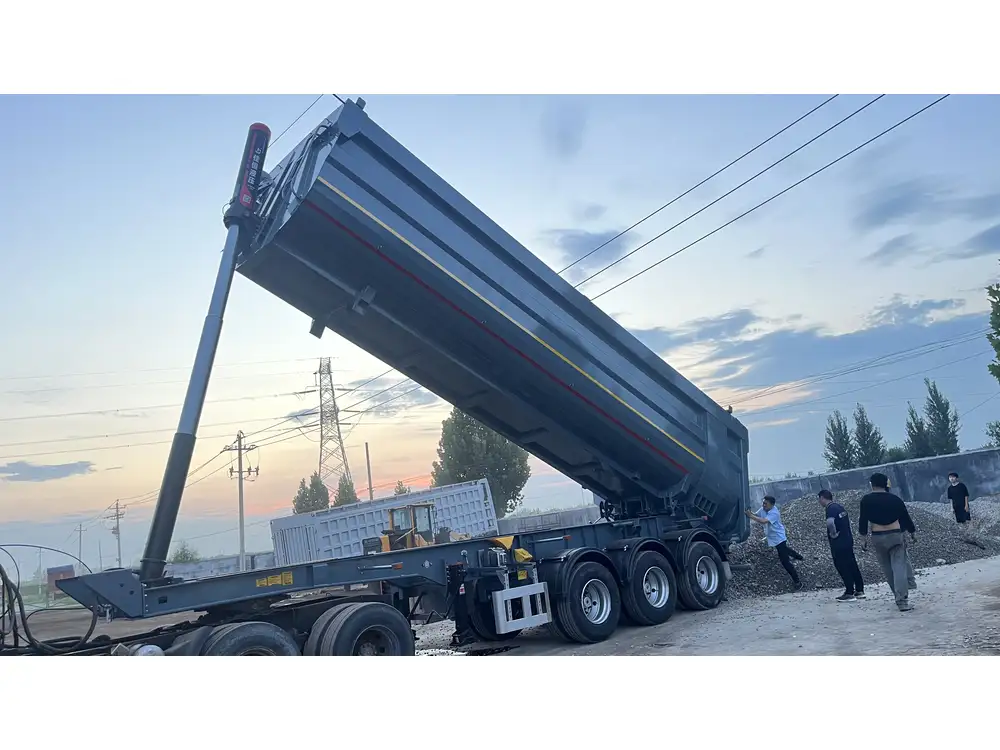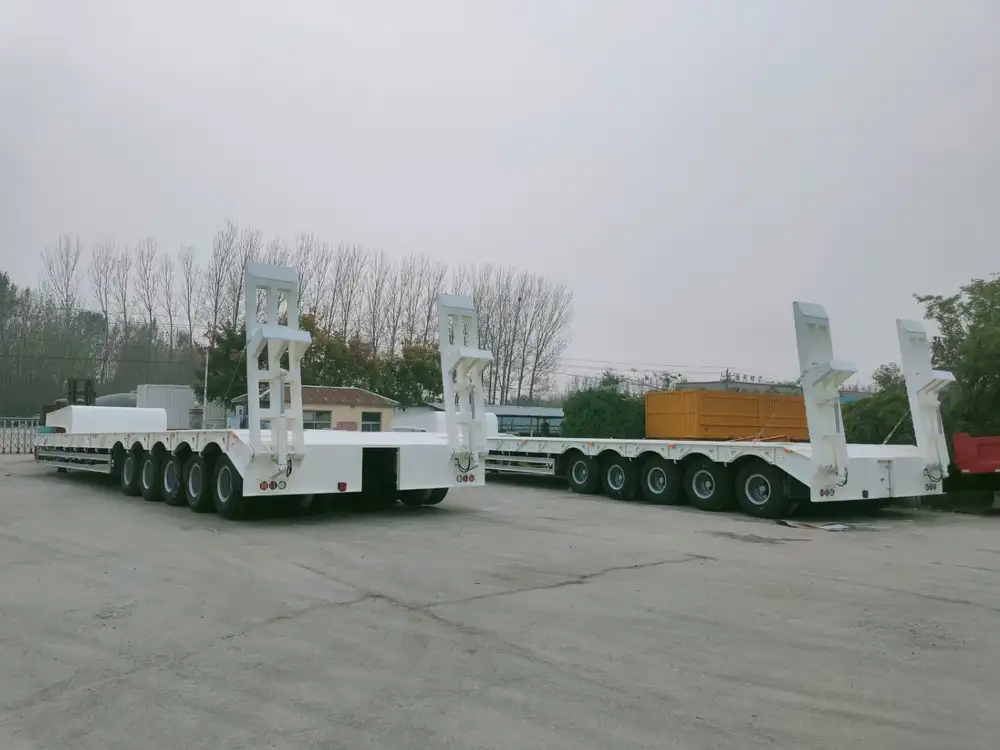When it comes to logistics and transportation, understanding the hauling capacity of flatbed semi-trailers is paramount. Not only does this knowledge aid logistics managers in effective load planning, but it also ensures regulatory compliance and optimal operational efficiency. Here, we delve into the critical aspects of flatbed capabilities, including weight limits, cargo types, and factors that influence hauling capacity.
What is a Flatbed Semi-Trailer?
Flatbed semi-trailers are versatile freight transport vehicles designed without sides or a roof, allowing for easy loading and unloading from all sides. These trailers are available in various sizes and configurations, making them a preferred choice for transporting oversized and unconventional cargo.
Key Characteristics of Flatbed Trailers
- Versatility: Suited for various cargo types such as machinery, construction materials, and oversized equipment.
- Accessibility: Loading can occur from the top, sides, or back, enhancing operational efficiency.
- Customization: Options for additional accessories like removable side rails, tarps, and drop-deck configurations.

Flatbed Trailer Weight Limits
Determining how much a flatbed can haul begins with understanding its weight limits. The gross vehicle weight rating (GVWR) combined with the trailer’s configuration greatly influences capacity.
Federal Regulations and Weight Classifications
In the United States, the Federal Highway Administration (FHWA) regulates weight limits to promote safety and road integrity. Generally, a standard flatbed semi-trailer has a typical capacity as follows:
| Trailer Type | Weight Capacity (lbs) | Maximum Length (ft) | Maximum Width (ft) |
|---|---|---|---|
| Standard Flatbed | 48,000 – 53,000 | 48 to 53 | 8.5 |
| Drop Deck | 45,000 – 52,000 | 48 to 53 | 8.5 |
| Double Drop Deck | 40,000 – 42,000 | 48 to 53 | 8.5 |
Factors Influencing Weight Limit
- Trailer Configuration: Drop-deck configurations allow for higher loads due to lower height.
- Axle Count: More axles typically mean higher weight limits.
- Construction Material: Steel trailers are generally more robust than aluminum, translating to higher weight capacities.

Cargo Types Suitable for Flatbed Trailers
Flatbeds excel in transporting a wide variety of cargo, and understanding which types of cargo fit best can maximize load efficiency.
Common Cargo Categories
- Heavy Equipment: Construction and agricultural machinery often exceed standard dimensions, making flatbeds ideal for transport.
- Building Materials: Lumber, steel beams, and other construction materials can be loaded efficiently.
- Over-dimensional Freight: Items that cannot be transported in enclosed trailers due to height or length restrictions.
Ideal Conditions for Loading
Loading practices significantly affect the efficiency of flatbed hauling. Here are common practices that facilitate secure and effective transport:
- Proper Weight Distribution: It is crucial to distribute weight evenly across the trailer to prevent swaying and to comply with weight regulations.
- Securing the Load: Utilizing chains, tarps, and other securing mechanisms helps prevent load shifts during transportation.
- Compliance with Legal Regulations: Adhering to local and federal regulations regarding load dimensions and weight ensures safe transport.

Maximizing Flatbed Hauling Efficiency
To fully leverage the capabilities of flatbed trailers, here are essential strategies for businesses involved in freight transportation.
Effective Load Planning
- Negotiating Rates: Understand how trailer capacity influences freight costs; often, higher-capacity loads mean lower costs per unit.
- Market Demand Analysis: Consistently monitoring demand for different types of cargo can align transport capabilities with market needs.
Technological Integration
- Load Calculation Software: Utilize software that calculates optimal loading capacities based on weight and dimensional restrictions.
- Telematics Systems: Implement systems that monitor load weight in real-time, ensuring compliance and safety.

Regulatory Considerations in Flatbed Transport
Regulations govern almost every aspect of transportation. Being knowledgeable about these rules helps avoid costly penalties and ensures safe operations.
Essential Regulations to Consider
- Weight Limits: Overweight fines can be significant; always verify the GVWR of your trailer.
- Height Restrictions: Monitor local and federal height regulations to avoid fines or accidents on your journey.
- Permitting Requirements: Some loads, particularly oversized ones, may require special permits before transport.
Importance of Compliance
Non-compliance can lead to hefty fines and legal repercussions, which can disrupt business operations. Staying abreast of regulatory changes can give your company a competitive edge.

Load Securement: Best Practices
Failing to properly secure cargo can lead to accidents and loss of load. Proper load securement practices are crucial for safety.
Load Securement Methods
| Method | Description | Ideal For |
|---|---|---|
| Chains | Strong and durable; suitable for heavy and bulky equipment | Heavy machinery and construction materials |
| Straps | Versatile and easy to use; often used for lighter loads | Pallets or smaller equipment |
| Tarps | Protects against weather; prevents debris loss | Open cargo that is sensitive to weather |
| Dunnage | Spacers to protect cargo during transport | Fragile items needing stabilization |
Importance of Overstocking Equipment
Maintaining an arsenal of load securement equipment caters to diverse loading needs. Different cargo types require specific securement methods to ensure overall compliance and safety.

Cost Considerations for Flatbed Transport
Understanding the financial aspects of using flatbed trailers is critical for logistics efficiency.
Breakdown of Costs
- Fuel Costs: Given the weight and size of cargo, fuel consumption will vary; optimize routes and loads to minimize costs.
- Driver Wages: Skilled drivers are essential for ensuring safe and efficient transport; invest in training and compliance to retain top talent.
- Maintenance: Regular inspections and maintenance of your fleet prolong its lifespan and prevent unwanted breakdowns.
Preparing a Cost Analysis
For businesses considering flatbed transportation, carrying out a detailed cost analysis can pave the way for effective budgeting and planned logistics strategies.
| Cost Factor | Annual Cost Estimate |
|---|---|
| Fuel | $10,000 – $15,000 |
| Maintenance | $5,000 – $10,000 |
| Driver Salaries | $40,000 – $60,000 |
| Insurance | $3,000 – $7,000 |

The Future of Flatbed Transportation
As industries evolve, so does the landscape of transportation. Staying abreast of trends can provide strategic advantages.
Innovations and Trends
- Automation: The advent of automated driving technology may soon change flatbed transport dynamics.
- Sustainability: Growing emphasis on eco-friendly practices may increase demand for flatbeds equipped with greener technologies.
- E-commerce Influence: As the e-commerce sector grows, understanding how flatbed logistics fits into this picture is crucial.
Conclusion: Essential Insights for Flatbed Cargo Transport
Understanding how much a flatbed can haul is just the beginning. Being aware of regulatory requirements, proper loading practices, and cost structures is pivotal in navigating the world of flatbed transportation. In an ever-evolving landscape, focusing on efficiency, compliance, and innovative practices will set your operation apart in the dynamic logistics sector.
For further insights or tailored advice on maximizing your flatbed transport logistics, we invite you to reach out to our expert team. Expert guidance can help streamline your operations, enhance compliance, and ultimately drive profitability in your freight business.



